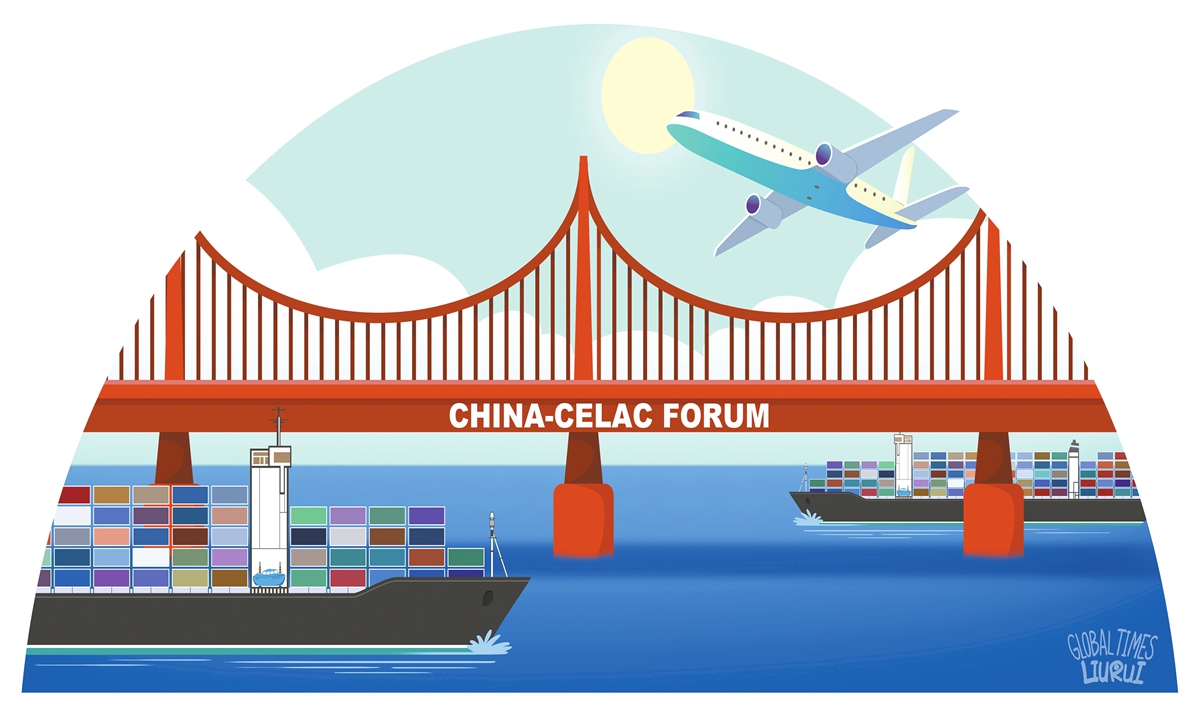
Illustration: Liu Rui/GT
In a context marked by the trade and tariff wars launched by the US, the China-CELAC Forum held in Beijing became a pivotal moment for debating new development paths for the Global South. The meeting in Beijing was attended by foreign ministers and representatives from CELAC, and for the first time, by Brazilian President Luiz Inácio Lula da Silva, Chilean President Gabriel Boric, and Colombian President Gustavo Petro.
Since the 2000s, China has significantly reshaped the political economy of many Latin American countries. First, China's role in the region's trade has grown considerably. In 2000, the Chinese market accounted for less than 2 percent of Latin America's exports. Over the next eight years, trade grew at an average annual rate of 31 percent. By 2021, trade exceeded a record $450 billion, according to the Chinese government, and some economists predict that it could exceed $700 billion by 2035. Today, China is Latin America's second-largest trading partner, following the US and preceding the EU.
Between 2000 and 2024, trade with China grew 40 times. During this period, both intra-regional trade and trade with the US declined. As for exports, the total value of goods traded between China and Latin America reached $518.47 billion in 2024, a year‑on‑year increase of 6 percent. Imports stood at $241.47 billion, up roughly 46 percent from five years earlier.
As of October 2024, the China Development Bank had provided approximately $160 billion in financing support to over 250 projects across 21 countries in Latin America, significantly contributing to the region's economic and social development. Also, at the forum, China announced a new 66 billion yuan ($9.16 billion) credit line to boost development in LAC member countries.
While Western finance has historically imposed conditions on Latin American countries, China has provided alternative routes for development finance. This new financing package offers Latin America greater flexibility and opportunities for growth. Furthermore, Chinese financing is focused on concrete projects with clear repayment terms.
More than 20 countries from Latin America and the Caribbean have joined the Belt and Road Initiative (BRI). Recently, Colombia joined, and Brazil signed a cooperation agreement to develop synergies within the BRI framework. Chinese investments in transport infrastructure are opening new routes for economic development in Latin America.
However, some challenges remain. The region's trade is still highly concentrated in low-value-added goods, the technological gap has widened substantially and limited state capacity in some countries has hindered the execution of large-scale projects financed by China. Planning new technology transfer programs, diversifying exports and increasing industrial capacity will be key to enhancing Latin America's development.
The author is an Argentine scholar and PhD candidate Johns Hopkins University.

